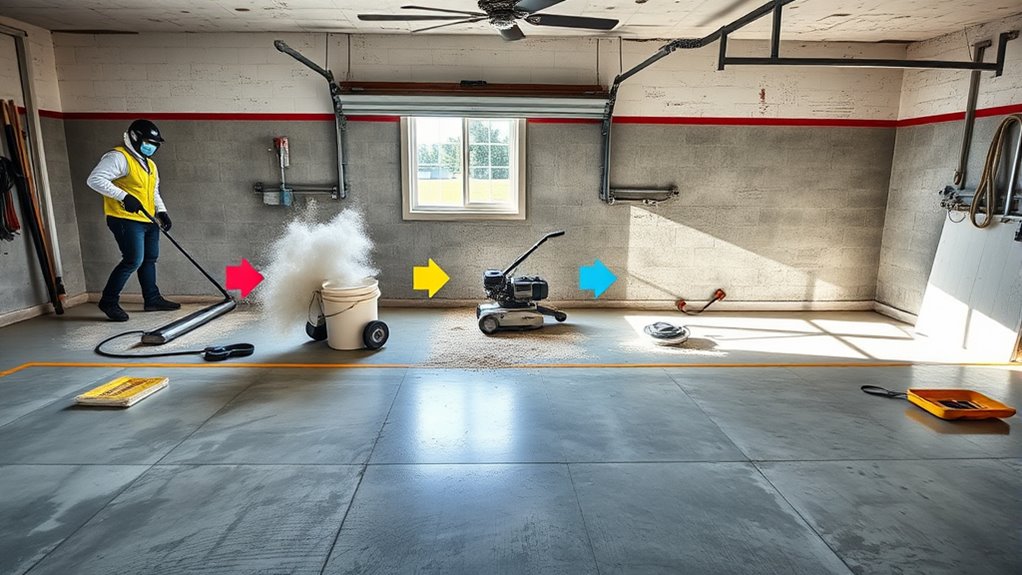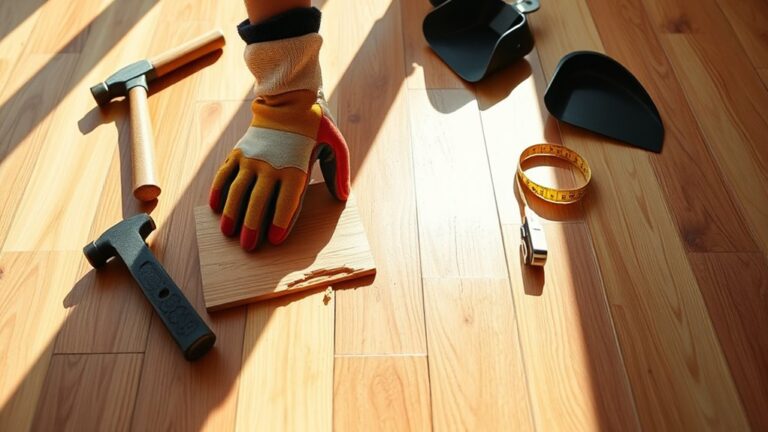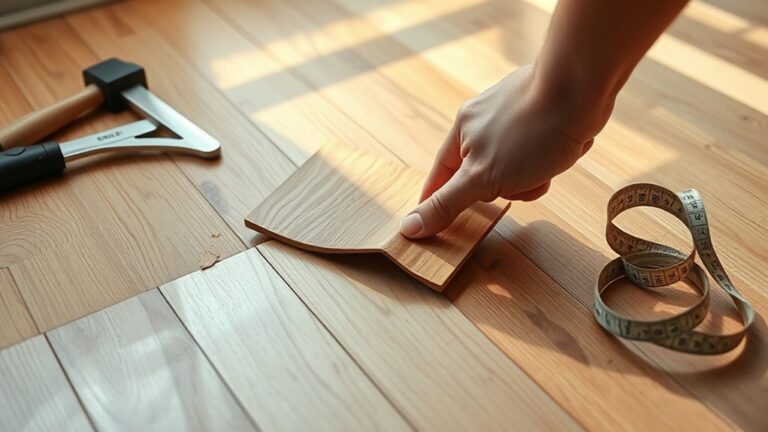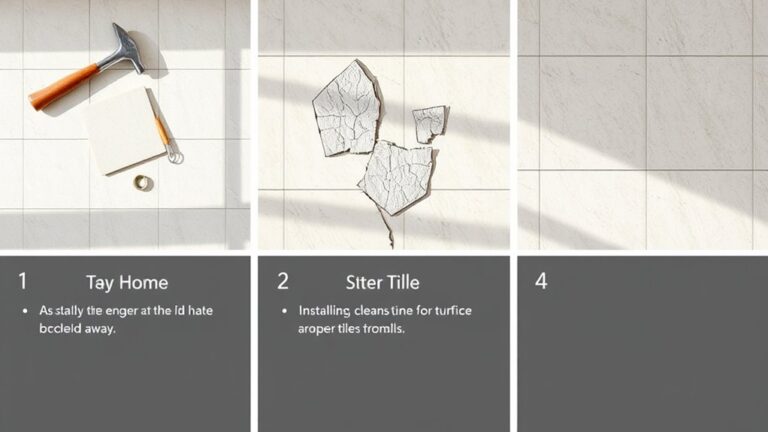To remove epoxy flooring in five easy steps, first clear and ventilate your workspace, then gather protective gear and necessary tools. Apply a chemical epoxy stripper evenly, letting it soak for 20–30 minutes. Next, scrape off the softened epoxy carefully with a floor scraper to avoid damaging the surface. Use mechanical methods like grinders for stubborn spots, then thoroughly clean and smooth the floor for a fresh start. Following these steps guarantees effective removal and preparation for your next project.
Prepare the Work Area and Gather Tools
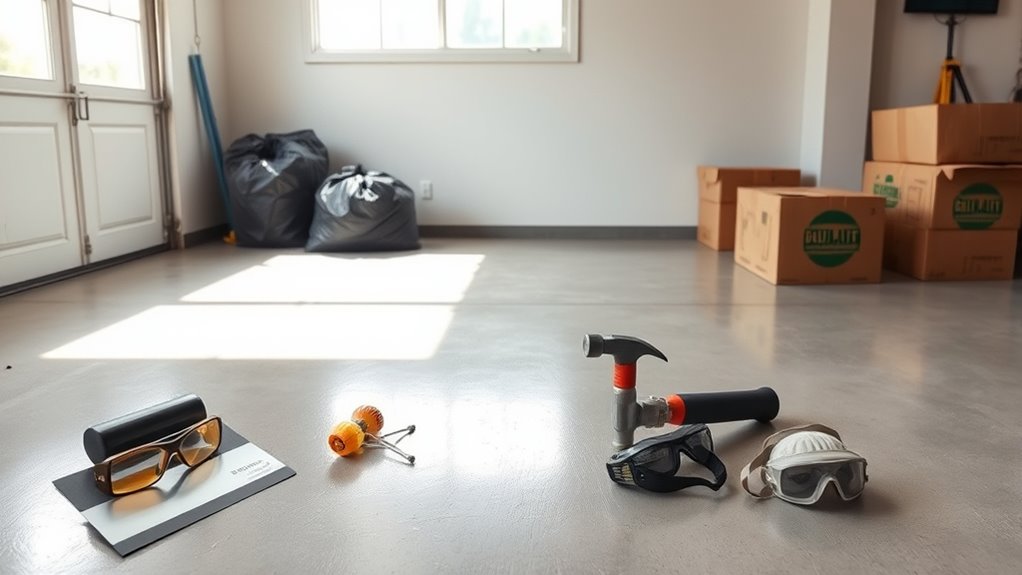
Before you begin removing epoxy flooring, make certain to clear the area of all furniture and debris to provide unobstructed access. Establish a defined work area by marking boundaries to contain dust and debris. Ventilate the space adequately, opening windows or employing fans to guarantee fresh air circulation. Gather essential tools such as a floor scraper, grinder, protective gloves, safety goggles, and a dust mask. Prioritize safety precautions: wear appropriate personal protective equipment (PPE) to prevent inhalation of dust and chemical exposure. Ascertain electrical tools are grounded and cords managed to avoid tripping hazards. By methodically preparing the work area and assembling your tools, you create a controlled environment that supports efficient epoxy removal and maintains your freedom to work safely and effectively.
Apply a Chemical Epoxy Stripper
Once you’ve secured the workspace and gathered your tools, you’ll apply a chemical epoxy stripper to break down the epoxy coating. Prioritize chemical safety by wearing gloves, eye protection, and a respirator. Guarantee proper ventilation before beginning. Follow the manufacturer’s instructions exactly for the stripper application, using a brush or roller to spread a uniform, generous layer over the epoxy surface. Avoid pooling, as uneven application can reduce effectiveness. Allow the stripper to penetrate for the recommended dwell time, typically 20 to 30 minutes, to soften the epoxy. Keep children and pets away during this process to maintain safety. By carefully managing these steps, you maintain control and freedom from the epoxy’s grip while minimizing health risks associated with chemical exposure.
Scrape Off the Softened Epoxy
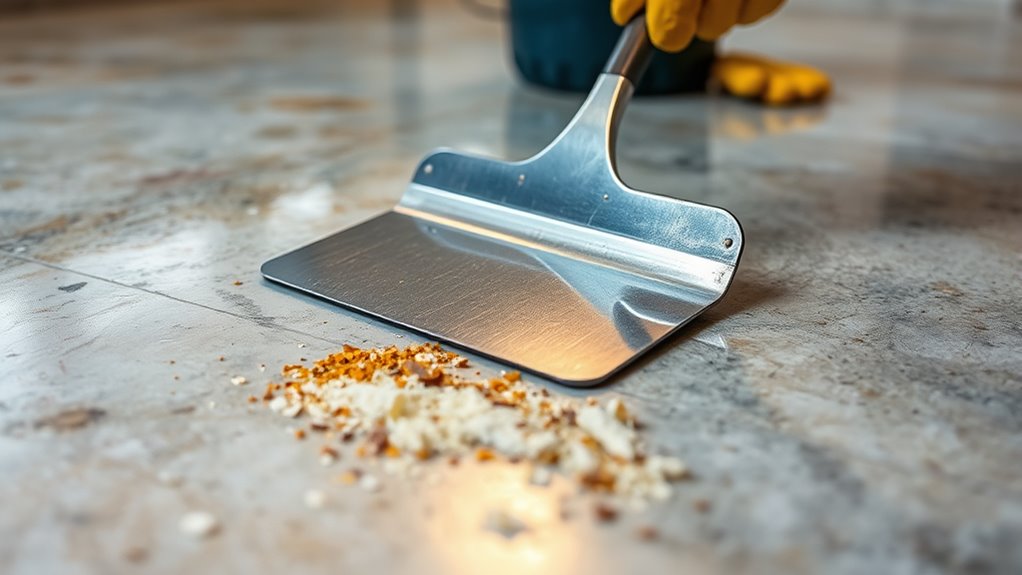
Begin scraping off the softened epoxy using a sturdy floor scraper or putty knife designed for heavy-duty use. Position the tool at a low angle to the floor and apply steady pressure, allowing the blade to lift the epoxy without gouging the substrate. Employ controlled scraping techniques, working in manageable sections to guarantee thorough epoxy removal. Pay attention to the edges of each softened area, as these can be more difficult to lift. Regularly clear debris from the blade to maintain efficiency. Avoid aggressive scraping that may damage the floor; instead, focus on consistent, methodical movements to peel away the epoxy layer. This step demands patience and precision, but mastering these scraping techniques will provide you with the freedom to restore your floor surface effectively and prepare it for any subsequent refinishing.
Use Mechanical Methods for Stubborn Residue
If scraping alone doesn’t fully remove the epoxy, you’ll need to employ mechanical methods to tackle the remaining stubborn residue. Mechanical tools such as angle grinders with diamond grinding pads, floor sanders, or rotary wire brushes are effective for this purpose. Begin by selecting the appropriate tool based on the floor type and epoxy thickness. Use steady, controlled passes, applying even pressure to avoid damaging the substrate. Mechanical methods efficiently break down the cured epoxy, enabling you to restore the surface. Always wear protective gear—respirators, safety goggles, and gloves—to shield yourself from dust and debris. Keep the workspace ventilated to maintain air quality. By methodically using mechanical tools, you regain control over the removal process, eliminating stubborn residue and preparing the floor for the next steps without compromising freedom or safety.
Clean and Smooth the Floor Surface
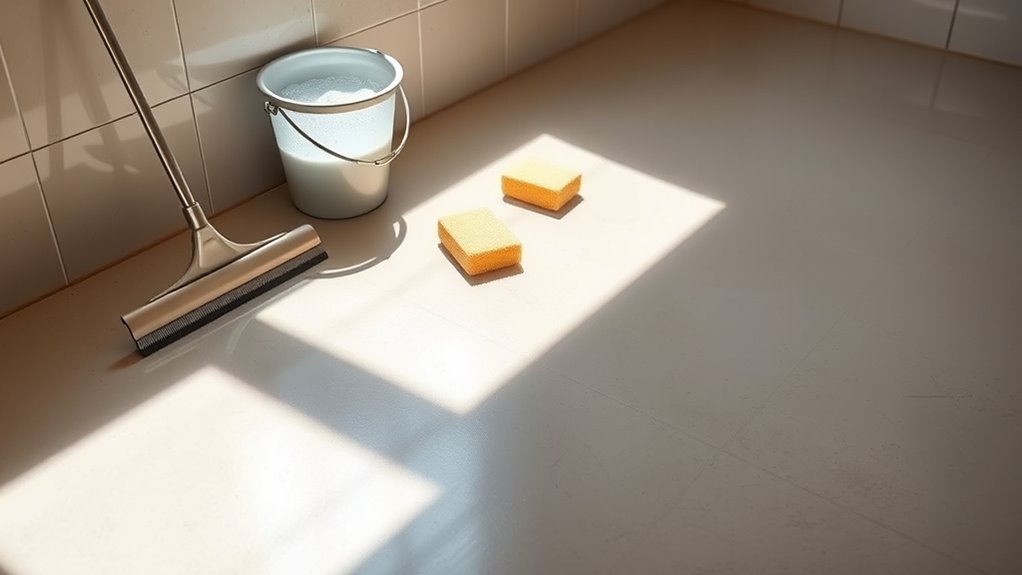
Although mechanical removal tackles most of the epoxy, you’ll still need to thoroughly clean and smooth the floor surface before proceeding. Begin by sweeping and vacuuming the area to eliminate dust and debris. Next, use a degreaser or a specialized cleaner to remove any remaining contaminants. After the floor is dry, inspect it for uneven spots or residual epoxy patches that can hinder surface leveling. Employ a floor grinder or sander with appropriate grit to smooth these imperfections efficiently. This precise floor preparation guarantees ideal adhesion for any new coating or finish. Remember, a well-prepared surface directly impacts the durability and appearance of your floor. By methodically cleaning and leveling the floor, you reclaim control and freedom to customize your space without limitations.

